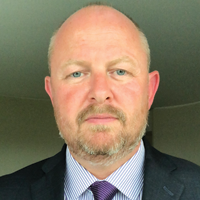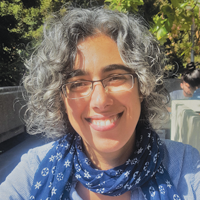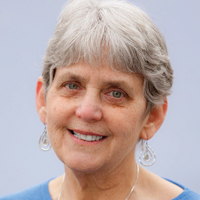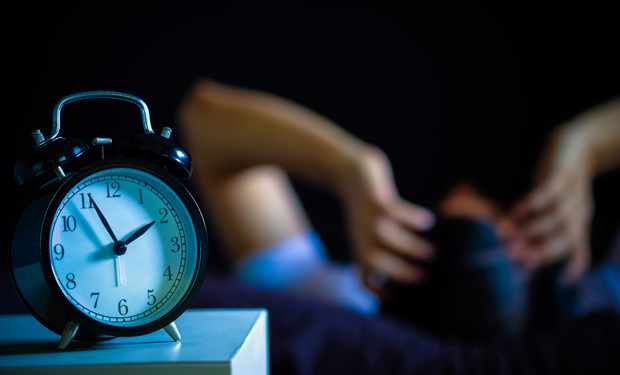Late one spring night in 1986, around 1:30 a.m., the residents of Pripyat, a Ukrainian city of 50,000 people at the northern tip of the Dnieper River, were shaken from sleep by a giant explosion originating in the nuclear reactor of the nearby power plant in Chernobyl. It was an event that would forever change the course of their lives, and that of human history. Hundreds of people died, both directly and indirectly from the explosion, which is now regarded as the worst nuclear power plant catastrophe in history. Today, the Chernobyl power plant and Pripyat are completely abandoned, unsafe due to nuclear contamination. Within a 19-mile radius in every direction of the plant, the landscape is considered unfit for human life for the next 50,000 years. And the cause? Well, when the dust settled, it was a simple condition we all suffer from time to time: an error caused by a worker with too little sleep.
Chernobyl is only one example of how catastrophic insufficient sleep can be. On a smaller scale, tired drivers drive like drunk drivers, and sleepy people take more unnecessary risks. Sleep deprivation is also catastrophic to our health, spiking risks for cardiovascular disease, dementia, and diabetes. Yet, a dangerous culture of sleep deprivation thrives in our world. In less than 100 years, we, as a society, have lost more than an hour of sleep, going from 7.9 hours in 1940 to 6.5 today. We may well know how bad sleep deprivation is for us, but science is just starting to figure out why.
The Price We Pay to Stay Awake

For a huge chunk of the workforce, sleep deprivation is unavoidable. Shift workers—bus drivers, military personnel, medical professionals, service industry workers, to name a few—make up more than 20% of the workforce in the U.S. “Things like shift work go against our fundamental biology,” says Kenneth Wright, professor of integrated physiology at the University of Colorado, Boulder, who studies the health and safety consequences of insufficient or disturbed sleep. “We are not built to do this, and there are consequences,” he says. In high-stress professions that deal directly with human lives— firefighters, police officers, and medical professionals— fatigue can be deadly. Yet, a 2011 study in the Journal of the American Medical Association found that 30% to 40% of U.S. police and firefighters have at least one undiagnosed sleeping disorder.
Medical professions are some of the hardest hit in this way, and the consequences are disastrous. According to the Institutes of Medicine, over one million injuries and between 50,000 and 100,000 deaths each year result from preventable medical errors, most of which are caused by fatigued medical caregivers. Yet, medical residents, the least experienced doctors, are expected to work continuous shifts of 24–36 hours with little to no sleep, averaging 88-hour weeks. In 2004, Steven Lockley, neuroscientist and associate professor of medicine at Harvard Medical School (upper right), did a study at Brigham and Women’s Hospital in Boston, MA, where he changed the work hours of residents, breaking their regular 28-hour shifts into two 16-hour shifts. It reduced serious medical errors by 36%. That was enough to convince the Accreditation Council for Graduate Medical Education (ACGME) to limit first-year residents for 16-hour shifts. But in 2017, after significant protest from hospitals, who were heavily reliant on the residents’ relatively cheap labor, those rules reverted back to the old ones.

“We’re seeing effects in the level of the cell, we’re seeing effects in the level of the system, in the level of the tissue, in the level of the brain,” according to Eti Ben-Simon, a post-doctoral fellow at the University of California, Berkeley’s Center for Human Sleep Science (right). Ben-Simon studies how a lack of or disturbed sleep affects the emotional centers of our brain. “Sleep really does help restore our function from physiology, to cognition, to emotion, to our experience of who we are.” Almost 70% to 80% of people that have anxiety disorders also have problems with their sleep. Insomniacs, in fact, are nearly three times as likely as the average person to develop anxiety. “It’s really a circle,” Ben-Simon said. “If you have sleep problems, you’re more likely to have anxiety, and if you have anxiety, you almost always have sleep problems.” Somehow, sleep deprivation seems to tip the brain’s emotional balance centers and stress reactions.
The hallmark of any psychiatric disorder or neurodegenerative disease is abnormal neurotransmitter signaling. Sleep and circadian timing systems utilize a large number of neurotransmitters, and play a large part in regulating their availability within the body. Therefore, when sleep cycles get out of whack, so do neurotransmitters. Enter a bevy of psychiatric disorders. Up to 90% of patients in the midst of a major depressive episode describe difficulties falling and/or maintaining sleep, and persistent episodes of sleeplessness tend to instigate further relapses into a depressive state. In addition, 80% of patients with schizophrenia have trouble sleeping. New mothers experiencing increased sleep loss after childbirth are at greater risk for post-partum depression. Patients with diseases like Alzheimer’s and Parkinson’s tend to simultaneously experience sleep problems, which compounds their disease symptoms, further impairing their cognition and emotions. Yet, interestingly, improvements in sleep quality tend to slow down these diseases.
Less sleep also makes us less social creatures. In one study of healthy young adults, Ben-Simon and her colleagues compared the neural responses of 18 individuals after a good night’s sleep and following sleep deprivation, recording their responses through brain scans while watching video clips of people with neutral expressions walking towards the camera. When they felt the person was coming too close, they pressed a button to stop the video. Sleep deprived individuals showed enhanced activity in a region of the brain called the “near space network,” which detects threats. Another circuit called the “theory of the mind,” which encourages social interaction, was shut down completely. These sleep-deprived people felt unhappy and more negative about life, became stressed more easily, and felt much more anxious.
And that’s not all. Sleep deprivation affects nearly every system in our bodies. Regularly sleeping less than 6 hours a night greatly reduces your immune system, doubles the risk for cancer, and is a major determining factor for the development of Alzheimer’s disease, cardiovascular disease, obesity, substance abuse issues, as well as all major psychiatric conditions. According to the World Health Organization (WHO), industrialized nations where reduced sleep is seen most—the U.S., U.K., Japan, and South Korea, among others—have also seen the greatest rise in those diseases. Even short-term sleep deprivation can have significant health effects. Just one week of reduced sleep can alter a person’s blood sugar levels enough to show signs of prediabetes—increased insulin resistance and decreased glucose tolerance. It also causes imbalances in hunger hormones leptin and ghrelin in the body, causing a person to crave foods high in carbohydrates. Worse, our metabolisms evolved to work best in the daytime, so eating the same meal at night versus during the daytime results in higher levels of blood glucose, insulin and fats for several hours after the meal. Some studies have shown these levels may return back to normal following a couple of nights of catch-up sleep, but persistent sleeplessness increases the risk of developing full-blown diabetes by about two to three times.

Take all that and combine it with an adolescent’s body. Mary Carskadon, professor of psychiatry and human behavior at Brown University (right), studies sleep deprivation in young adults, an increasingly common condition caused by hectic schedules and early school bells. Kids sleeping less than 5 or 6 hours a night, she found, not only showed impaired learning in school, but increased risk for obesity, reduced immune function, mood disorders and depressive tendencies, and impulsive and risk-taking behaviors, like drinking and drugs, and even suicidal ideation, or suicide. “A 15-year-old probably needs as much sleep as a 10-year-old, so when you combine the biology with what happens in most communities with the school bell system, they’re having to go to school and wake up earlier,” she said. “Sleep is getting squeezed out of their school day time bank.” It’s critically important for parents to help kids develop good sleep habits early on, she said, because that will make it easier for them to sustain them through their teen years.
Sleep Solutions
Even though it might not be possible to change a work schedule, there are ways to improve sleep quality. Part of Ken Wright’s work is to develop strategies for improving the health and performance of people who struggle most. “We really want to try to maximize the total sleep they get in 24 hours,” he said. A night shift worker, for instance, isn’t going to get as good a quality of sleep during the day, so Wright might encourage them to nap for a couple of hours before their shift, and then sleep 5 or 6 hours afterward, “so the total 24-hour sleep time is as much as it can be.” And then, when it is time to sleep, winding down is important. Overhead and outdoor lights filtering inside are also concerning. Some cities, like Cambridge, MA, dim streetlights in the evening to reduce blue light emissions. Eventually, said Lockley, streetlights around the country will be tunable, changing their spectrum throughout the night. That will not only help residents get a better night’s sleep, but will also reduce energy use, saving cities money.
It used to be that the first line of treatment for sleeplessness was sleep medications like Ambien. In 2010, prescriptions for sleeping pills grew to more than 20 million from 5.3 million in 1999, according to national estimates. Recent studies, however, found these medications do not actually produce natural sleep, so the restorative functions of deep sleep are never reached. As a result, a bevy of unpleasant side-effects take hold the following day: grogginess, forgetfulness, and slowed reaction times. Last April, the Food and Drug Administration issued a safety announcement warning that Ambien and two other sleep aids, Lunesta and Sonata, can induce dangerous behaviors, including sleep walking and sleep driving. The drugs are now required to warn patients about this on their warning labels. These medications can also be addictive, leading to an endless cycle of caffeine to cure morning grogginess, which prevents sleep at night, causing the patient to take yet another sleeping pill.
As a result, medication is now considered a last resort, often replaced by a type of therapy known as Cognitive Behavioral Therapy for Insomnia, CBTI, which increases a person’s sleep “hygiene.” Doctors assist patients in identifying actions that inhibit or disturb sleep—lack of exercise, afternoon caffeine or alcohol consumption, naps, even negative thoughts—and develop strategies for changing those behaviors. Not only is CBTI effective, it is also long-lasting.
Elderly patients with dementia might benefit from a simple change—light exposure. Often, patients with these diseases live in nursing homes or other care facilities where indoor lighting remains constant. In one 2008 study in the Netherlands, lighting at a care home was made brighter from 10 a.m. to 6 p.m., and then dimmer in the evening hours. The majority of patients housed in the facility showed a significant slowing in the rate of cognitive decline, improved day-to-day functioning, less depression, and improved sleep. But this type of light therapy is not only beneficial to the elderly. Any individual, young or old, who spends most of their time indoors does not experience natural light cycling, and may be experiencing insomnia as a result. Simply adjusting light cycles in indoor environments has even been shown to alleviate some of the symptoms for mood disorders like unipolar and bipolar depression.
Some higher-tech solutions are sometimes used as well. Cranial electrotherapy stimulation, for example, sends electrical currents through electrodes attached to different parts of a patient’s head to treat a variety of conditions, including anxiety, depression, and insomnia, but the results are often widely varied, and completely ineffective for some. It tends to work more consistently as a treatment for depression, showing widely varied results for insomnia. Some patients see an immediate effect, while others see no improvement whatsoever two months into treatment. Ben-Simon believes there could be potential for this to be a more effective treatment in the future if more specific neural target regions are identified, but that hasn’t happened yet.
Regardless of whether high-tech or low-tech solutions provide some assistance, for our overall health and well-being, “we need to take sleep more seriously than we do now,” said Ben-Simon. But in this fast-paced, sleepless world, that seems far from likely.
Selected Sources
- S. W. Lockley and R. G. Foster, Sleep: A Very Short Introduction, Oxford, U.K.: Oxford Univ. Press, 2012.
- J. Marksberry, “The management of anxiety, insomnia and depression with cranial electrotherapy stimulation,” Brain Stimul., vol. 12, no. 2, p. 397, 2019. doi: 10.1016/j.brs.2018.12.277
- M. Matousek, “Elon Musk says you need to work at least 80 hours a week to change the world,” Inc.com, Inc., Nov. 2018. [Online]
- C. H. Organ, “Resident work hours: The evolution of a revolution,” Arch. Surg., vol. 136, no. 12, 2001. doi: 10.1001/archsurg.136.12.1426-a
- E. B. Simon and M. P. Walker, “Sleep loss causes social withdrawal and loneliness,” Nature Commun., vol. 9, no. 1, 2018. doi: 10.1038/s41467-018-05377-0
- M. P. Walker, Why We Sleep: Unlocking the Power of Sleep and Dreams, New York, NY, USA: Scribner, 2018.



